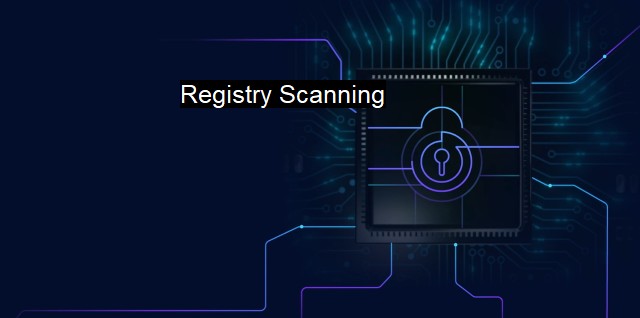What is Registry Scanning?
The Importance of Registry Scanning in Cybersecurity: Detecting and Eliminating Potentially Harmful Activities in Windows Registry
Registry scanning is an important aspect in the field of cybersecurity and antivirus implementation. This process deals with the detection, analysis, and potential resolution of issues within the "registry" of a computer system. It significantly augments the overall security of a device to protect from potential threats that could render high levels of damages.The registry, in the context of an operating system, is a database that stores low-level settings for the OS and for some software that opts to use the registry. The kernel, device drivers, services, Security Accounts Manager (SAM), and user interface can all use the registry. When software or the system attempts to read from this vital part of the operating system, malware, viruses, or unwanted software can exploit it and introduce unwanted, harmful parameters.
Registry Scanning is a cybersecurity approach used to assess any potential anomalies or irregularities within this database. Regular registry scanning is a preventive measure, significantly PS decreasing vulnerability to cyber attacks by identifying registry errors, pending software setup keys, dormant and malicious software that have obtained large scale processing parameters in the OS, and many more anomalies.
Antivirus applications often take up the duty of Registry Scanning as part of their routine checkups. They progressively scan various sectors of the overall computer system to try and locate threats which could compromise not only the immediate system performance but also integrity of the data stored. The registry becomes a focal point of this scanning due to its intrinsic ties to the smooth functioning of the computer.
The primary function of registry scanning is certainly to detect potential threats. These threats, posed by malware or viruses, can often find their way into the registry unwarranted and begin to disrupt the normal functioning of the operating system. detection is only the first step in the overall security provision. Once a potential threat is detected, it has to be dealt with swiftly to avoid escalation into any significant damage.
After identifying threats, the security system applies its built-in or update features to inhibit the action of the detected malware or viruses. If this is not possible due to the sophistication of the malware inscription the failure is logged and communicated to higher-preventive strategies which might involve external communication to cybersecurity agencies for advanced methods of problem resolution.
There are standalone registry scanning applications that only focus on the registry health. Despite this being their core focus, it remains advisable to have a wrap-around tool like an antivirus program which delivers comprehensive security measures.
It's important to note that while scanning pertains to antivirus activities, threats to the registry aren't wholly derived from viruses. There could be system errors and remnants from uninstalled programs bogging down system processes. This additional clutter, albeit not malicious, can bear significant effect on system performance, hindering its optimal functioning.
Unfortunately, registry scanning, while necessary, can also be misused as a fear-mongering tool. Some programs exaggerate registry errors to panic the user into buying premium versions or unneeded tools. Users should therefore be cautious in approving major changes suggested by these tools, always verify claims made by registry scanners and use trusted sources for their cybersecurity solutions.
Registry scanning forms a core part of effective cybersecurity implementation, aiding in maintaining system health and preventing manipulation of the system's operations by unwarranted elements. It promotes peace of mind and a robust platform for getting the best out of a computer system. Every system will have a few registry irregularities; the key is to maintain vigilance and decisiveness in tackling major threats. With effective registry scanning, the integrity and stability of the system are assured. users must be equally aware to avoid unnecessary panic and take advised cybersecurity steps.

Registry Scanning FAQs
What is registry scanning?
Registry scanning is a technique used by antivirus programs to search for any changes or anomalies in the Windows registry. It checks for any malicious entries or modifications that could indicate a potential security threat.How does registry scanning help in cybersecurity?
Registry scanning helps in cybersecurity by detecting any changes in the Windows registry caused by malware or other malicious software. It helps in identifying and removing these threats before they can cause any harm to the system.Is registry scanning necessary for antivirus software?
Yes, registry scanning is an essential component of antivirus software as it enables the program to detect and remove any malicious entries or modifications in the registry that could compromise the security of the system.Can registry scanning cause any issues with the computer?
In rare cases, registry scanning can cause issues with the computer, such as slowing down the system or causing errors. However, these problems are usually caused by poorly-designed registry scanners or user error. It is essential to ensure that you use a reputable antivirus program and follow the manufacturer's instructions to avoid such issues.| | A | | | B | | | C | | | D | | | E | | | F | | | G | | | H | | | I | | | J | | | K | | | L | | | M | |
| | N | | | O | | | P | | | Q | | | R | | | S | | | T | | | U | | | V | | | W | | | X | | | Y | | | Z | |
| | 1 | | | 2 | | | 3 | | | 4 | | | 7 | | | 8 | | |||||||